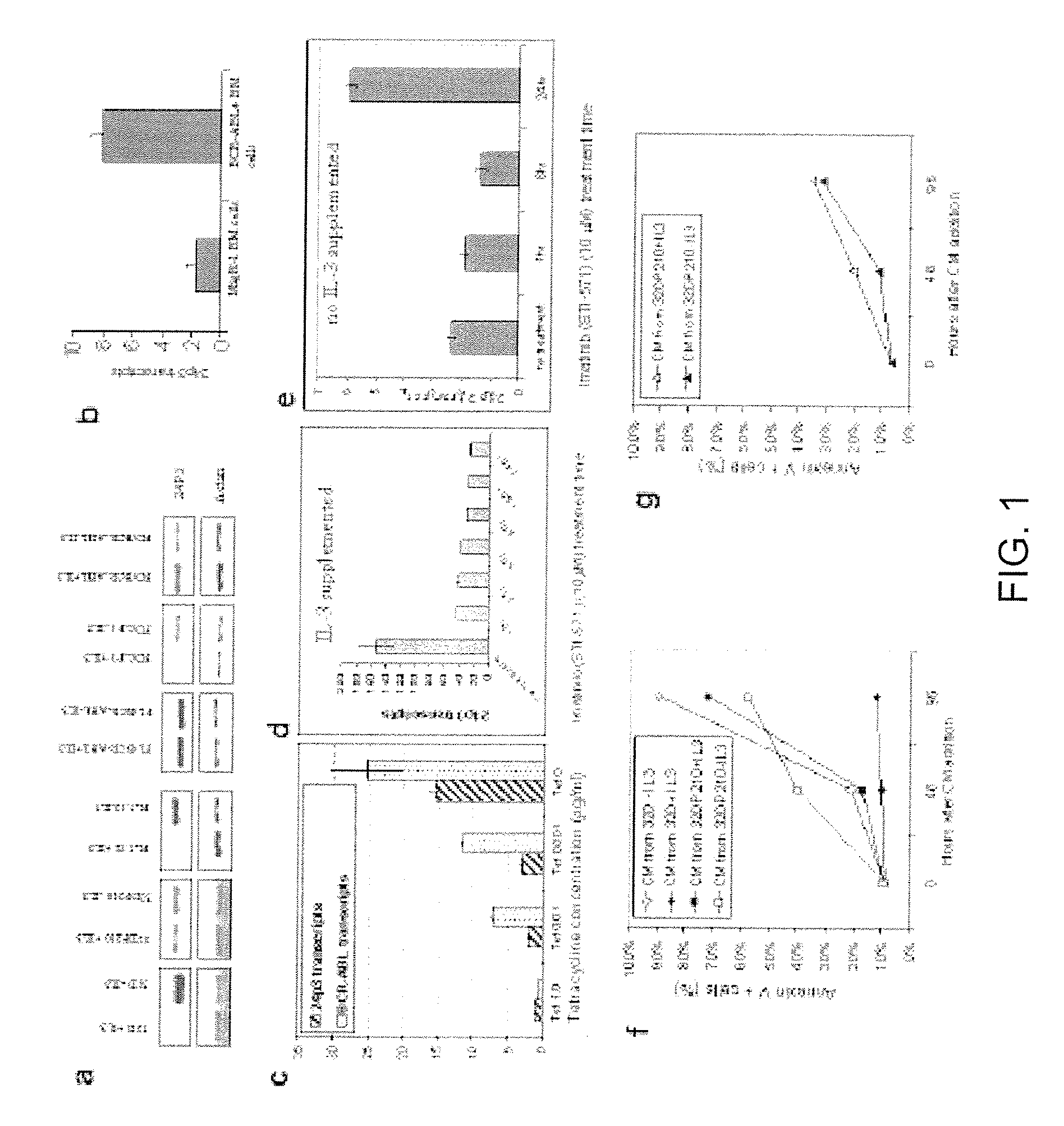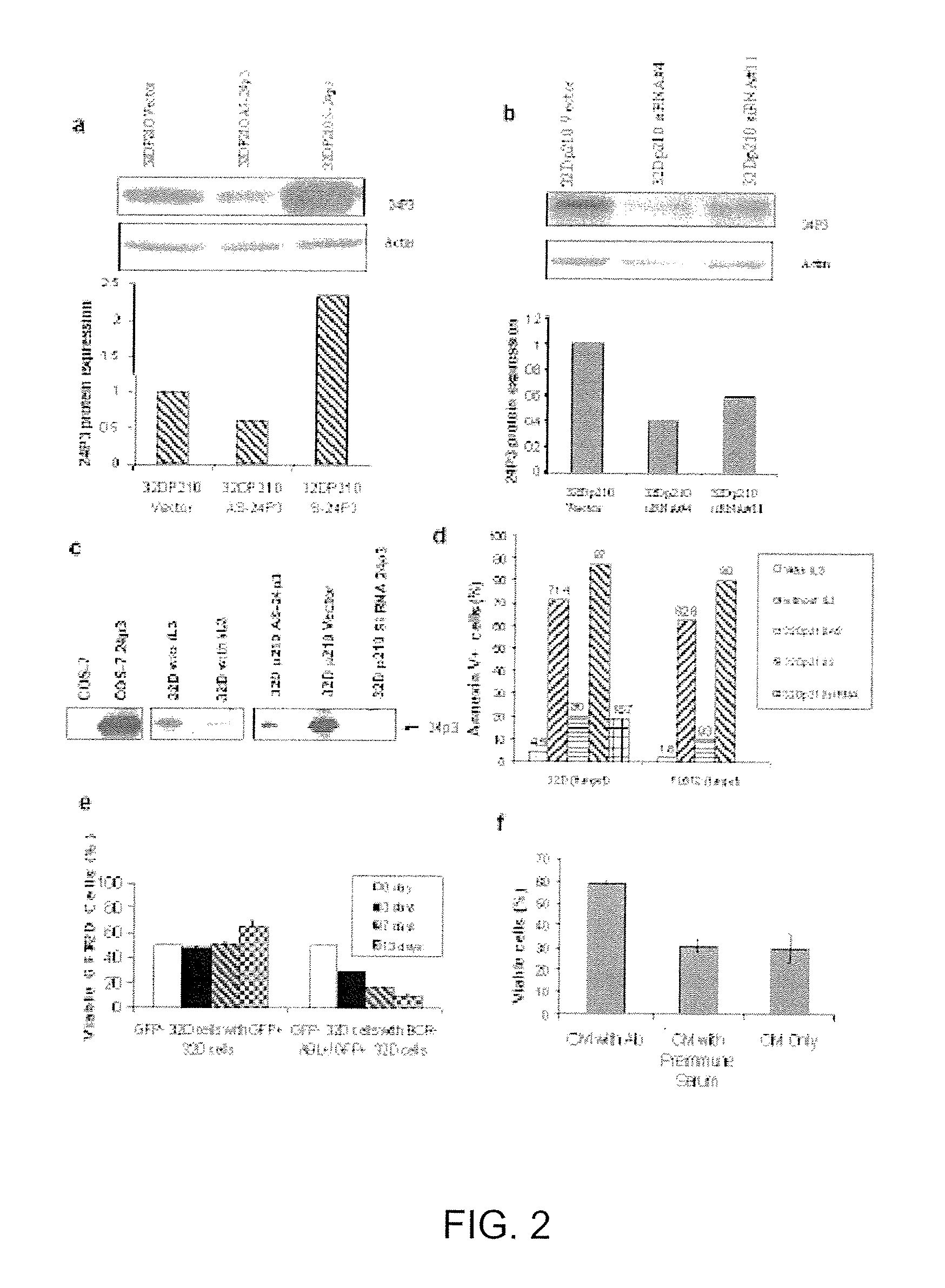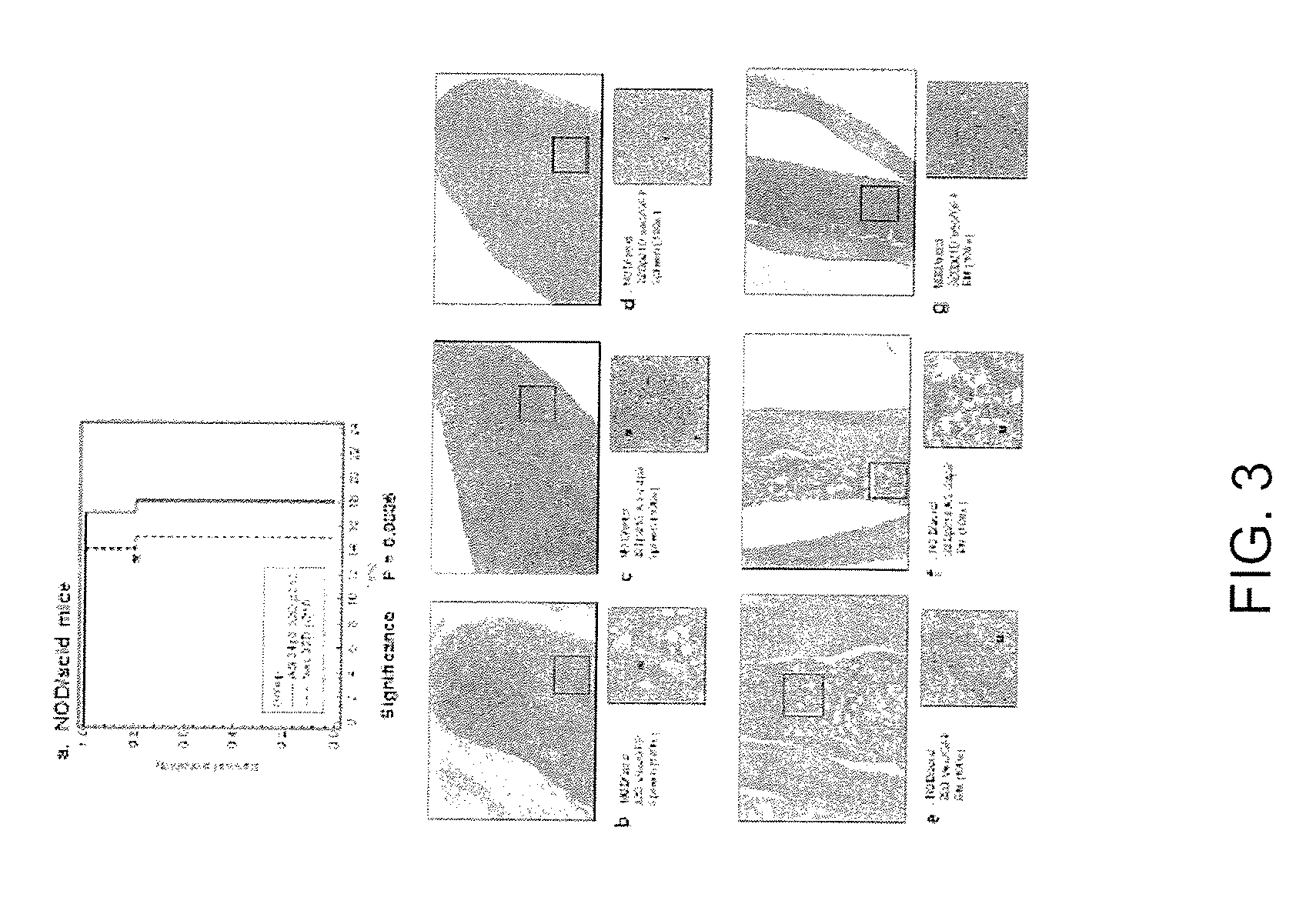Targeting a Secreted Pro-Apoptotic Factor for Cancer Therapeutics
a cancer and pro-apoptotic technology, applied in the field of cancer biology, can solve the problems of non-cancerous cell destruction, and achieve the effects of reducing the expression level, preventing the proliferation of one or more cancer cells, and preventing destruction
- Summary
- Abstract
- Description
- Claims
- Application Information
AI Technical Summary
Benefits of technology
Problems solved by technology
Method used
Image
Examples
example 1
Mouse Hematopoietic Cells Expressing BCR-ABL Persistently Express 24P3 Transcripts
[0357]Using RT-PCR, 24p3 RNA expression was found in several IL-3 dependent mouse hematopoietic cell lines transformed by BCR-ABL (FIG. 1a). Importantly, 24p3 expression was independent of IL-3 (FIG. 1a). Transformation of these cells with BCRABL abrogates the need for IL-3 for cell proliferation and survival (Daley et al., 1987).
[0358]BCR-ABL negative counterparts of these cell lines require IL-3 for proliferation and survival, and produce only trace levels of 24p3 unless starved of IL-3 (FIG. 1a). In contrast, BCR-ABL+ mouse hematopoietic cells constitutively produce transcripts of 24p3 independent of IL-3 (FIG. 1a). Similar results were obtained with BaF3-BCR-ABL cell system (not shown). Importantly, transduction of BCR-ABL into primary mouse marrow cells also greatly stimulated expression of 24p3 transcripts (FIG. 1b).
example 2
24P3 Expression of BCR-ABL+ Cells Requires the Tyrosine Kinase of BCR-ABL
[0359]The present inventors examined the requirements for 24p3 expression in BCR-ABL+ 32D cells. The present inventors used the tetracycline (Tet) induction system to determine whether a reduction in BCR-ABL levels would reduce the level of 24p3 transcripts. Cells maintained in a high dose of Tet to suppress BCR-ABL expression had reduced levels of 24p3 transcripts relative to no Tet. Increased expression of BCR-ABL as measured by RT-PCR correlated with increased expression of 24p3 transcripts (FIG. 1c). Treatment of cells with imatinib mesylate (IM), a potent inhibitor of the Bcr-Abl tyrosine kinase (Druker et al., 2002) in the presence of IL-3 to prevent apoptosis induction, greatly reduced 24p3 transcripts (FIG. 1d). In the absence of IL-3, the level of transcripts showed a modest decrease but after 8 hrs the level of 24p3 transcripts more than doubled (FIG. 1e), suggesting that the mechanism of the inductio...
example 3
BCR-ABL+ 32D Cells are Resistant to the Apoptotic Effects of Conditioned Medium from Cells Expressing 24P3
[0360]Since P210 BCR-ABL is known to activate Stat5, to increase expression of BCL-XL and BCL-2 proteins in a manner that is independent of the IL-3 receptor pathway, and inhibit the activation of Bad and that Bad and Bcl-XL antagonize each other effect on cell death (Salomoni et al., 2000), it was determined whether BCR-ABL expression in hematopoietic cells rendered them resistant to the apoptotic effects induced by 24p3.
[0361]Indeed as expected 32D cells were sensitive to apoptosis induction by conditioned medium (CM) from either IL-3 starved 32D cells or BCR-ABL+ 32D cells (FIG. 1f). In contrast, BCR-ABL+ 32D cells were resistant to the apoptotic effects of CM from either IL-3 starved 32D cells or BCR-ABL+ 32D cells (FIG. 1g; Table 1). CM from BCR-ABL+32D cells also induced apoptosis in normal mouse bone marrow cells maintained in primary culture and 32D cells, but again BCR-...
PUM
| Property | Measurement | Unit |
|---|---|---|
| Atomic weight | aaaaa | aaaaa |
| Mass | aaaaa | aaaaa |
| Mass | aaaaa | aaaaa |
Abstract
Description
Claims
Application Information
 Login to View More
Login to View More - R&D
- Intellectual Property
- Life Sciences
- Materials
- Tech Scout
- Unparalleled Data Quality
- Higher Quality Content
- 60% Fewer Hallucinations
Browse by: Latest US Patents, China's latest patents, Technical Efficacy Thesaurus, Application Domain, Technology Topic, Popular Technical Reports.
© 2025 PatSnap. All rights reserved.Legal|Privacy policy|Modern Slavery Act Transparency Statement|Sitemap|About US| Contact US: help@patsnap.com



